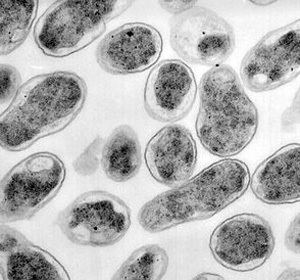Order Rhizobiales Genus Brucella Higher classification Brucella | Phylum Proteobacteria Scientific name Brucella melitensis Rank Species | |
 | ||
Similar Brucella, Brucella abortus, Bacteria, Brucella canis, Brucella ovis | ||
Brucella melitensis is a Gram-negative coccobacillus bacterium from the Brucellaceae family. The bacterium causes ovine brucellosis, along with Brucella ovis. It can infect sheep, cattle, and sometimes humans, and it can be transmitted by the stable fly. It is zoonotic, unlike B. ovis, causing Malta fever or localized brucellosis in humans.
Contents
Pathogenesis and disease
The bacterium causes severe inflammation of the epididymis, with formation of spermatocoeles and fibrinous adhesions. This disease is known as ovine brucellosis, and is a reportable disease in the USA. It can also cause epididymitis in cattle, and reproductive disease such as orchitis, mastitis, and abortions.
History
In 1887, M. melitensis was isolated in Malta by David Bruce from the spleen of a soldier who had died from acute brucellosis. The mechanism of transmission was not determined until 1905, when Temi Żammit found that apparently healthy goats could infect humans with M. melitensis via their milk.
